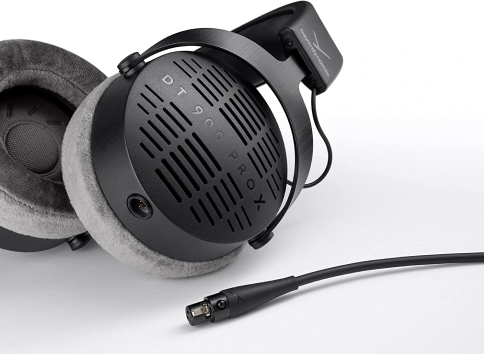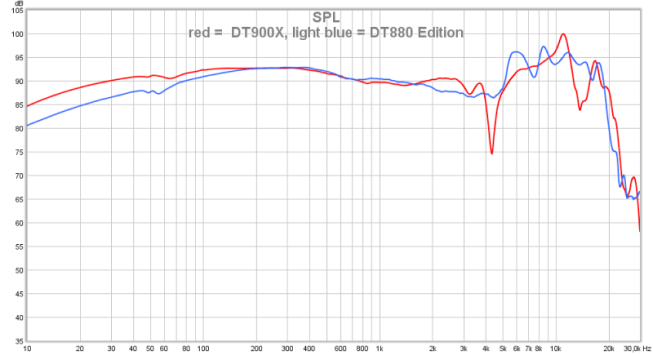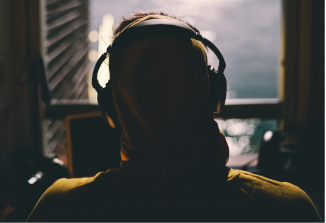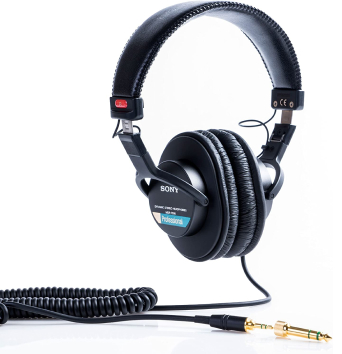Mixing With Sony MDR-7506 Headphones
Nov 07, 2022
In this post, I want to do a detailed breakdown of the Sony MDR-7506 headphones.They are such a popular choice for beginner producers and mixing engineers because of it's cost and quality. We'll be discussing the use of the 7506 wth producing and mixing but we'll tailor more to mixing on the Sony MDR-7506.
We'll take a look at the advantages and disadvantages of the Sony MDR-5706 but also look at the comfort and build quality as well.
I don't know about you, but when I'm mixing with headphones, of course I want to make sure the sound quality is good but I also think it's really important that they're comfortable and I can wear them for an extended period of time without hurting my hears.
History Of The Sony MDR-7506
For all you history buffs out there, the Sony MDR-7506 was built in 1991, after its predecessor, the Sony MDR-V6 . You might be familiar with the MDR-V6 from seeing DJs wear them. They were super popular among the DJ crowd in the 80s.
For interest sake, take a look at the MDR-V6 and how the compare to the modern MDR-7506. I mean, they look different but hardly though, right?
Original Sony MDR-V6
Modern Sony MDR-7506
They are a classic, industry-standard pair of headphones that have been almost unchanged for three decades. If you go to any recording studio, you’ll likely find at least one pair due to their affordable price, flat frequency response, and compact, foldable design. We'll get into all of this soon.
Advantages Of Mixing With The Sony MDR-7506
The Sony MDR-7506 has a pretty flat frequency response and good sound quality, even for being such an affordable pair of headphones. Because of their deep-bass response and high-frequency boosts, they are great for picking out clicks, pops, low rumbles and other undesired noises in the mix.
Take note of the image below which draws out the frequency response of the Sony MDR-7506 Headphones.

Notice the boost in bass frequencies and the mid-high range boost. This allows you to get a lot of detail but could be a concern for some mixing engineers. Sometimes that Sony MDR-7506 could be perceived as being too "bright" which has to due with their frequency response.
If you're not sure how to read or understand the frequency response graph above then I recommend checking out this video on how to setup your studio monitors. You could also take look at this video tutorial on how to use EQ which gives a good representation of frequencies.
Are the Sony MDR-7506 Noise Cancelling?
No, they are not noise cancelling headphones. However, they do a fairly good job at sound isolation. With the exception of around 60 HZ, the bass response is great and doesn’t get too boomy.
Disadvantages Of Mixing With The Sony MDR-7506
If we're going to pick on the MDR-7506's for a but then I would say the low midrange is a little weak as compared with other headphones.
The mid and high frequencies can sound overly bright which I was mentioned above. This isn't' great because it can mislead you into thinking your mix is too bright. When it actually isn't. Whereas, more expensive headphones can be much cleaner because of flatter responses. For instance, the Beyerdynamic DT 900 Pro. These are more expensive but cost does matter with headphones. This is what they look like:

Let's compare the frequency response for the DT 900 Pro to the Sony MDR 7506.

Take note of the image above, notice how the response is much flatter in the DT 900 Pro. Even though there are still problem areas in the Beyerdynamics's. I won't get into those in this post) you can see how a more expensive pair of headphones usually has a flatter frequency response.
Furthermore, if you're mixing classical music or cinematic music then the MDR-7506 might not be the best option for you because of the weaker low mid range and accentuated treble.
If you're worried about headphone bleed with the MDR-7506 while recording, you shouldn't be. I mean, there will be some bleed but the easiest solution is just turn down the mix in your headphones. On the other hand, you could invest into a noise-cancelling or noise attenuating style of mixing headphone like the Sennheiser Professional HD 300 PRO .
Comfort Of The Sony MDR-7506
I'll be completely honest here, the Sony MDR-7506 headphone aren't the most comfortable pair of headphones out there. They're descent though. At only 8 ounces, they’re more light-weight than most headphones.

They don’t press against your face and ears too much and give some breathability while still isolating the sound. However, after you wear them for hours they start to feel tight and heavy. Also, one downfall is that they’re not great with glasses.
Its coiled cord gives you some room to move around while mixing without accidentally tugging and damaging a jack. When used for long periods of mixing in Logic Pro, it can get hot, not in a good way. That's not a bad thing, if you're mixing in the middle of winter in Canada. However, mixing in any hot climate will make it much hotter.
MDR 7506 Build Quality
The Sony MDR-7506 is easily transportable and easy to bring to other studios. They’re not too bulky and easy to pull out of a backpack to work on the road or in commute.
One weakness is their plastic hinges, while it's strong plastic, they still have the potential of breaking and don't feel like they can stand the test of time, in comparison to headphones that are one tightly connected piece.

Another potential issue is the cable being a part of the headphones. If the cable happens to break, it’s not easily replaceable with a new cable and will likely require you to purchase a whole new pair of headphones. Big bummer. Most other professional mixing headphones have separate headphones and wires.
Does Cost Matter When Choosing Headphones?
Yes, it does. You can expect a cheap pair of headphones to be made of cheap materials. You can expect an expensive pair of headphones to be manufactured with better materials. This material can include, stronger and more durable metals that will make the headphones last longer. Also, software and squishier ear pads that make the headphones more comfortable to wear longer.

However, it's not just about the comfort or look of of the headphones. The quality of the audio drivers within the headphones will make up the quality of the sound. Cheaper drivers will have worse frequency ranges and response. More expensive drivers will have larger rangers, faster, and flatter responses. The Sony MDR-7506 is a middle ranger headphone. The parts aren't super expensive but they're not super cheap either. I consider it a good headphone but not a great headphone.
Final Thoughts On The Sony MDR 7506
You can’t go wrong with having a pair of Sony MDR-7506s in your studio, as they have been proven to be one of the most widely accepted, versatile pairs of headphones in the music industry. Of course, part of determining the perfect pair of headphones to mix with is subjective and dependent on the preferences of the mixing engineer.
Worst case, if you buy a pair of MDR-7506's, you'll always be able to have them as an extra set of headphones in your home studio. If you're curious to learn more about what's in my home studio. I've listed everything I own here. Also, I'd love to teach you how to become a better producer. I suggest getting my 6 free pillars on learning Logic Pro faster.










